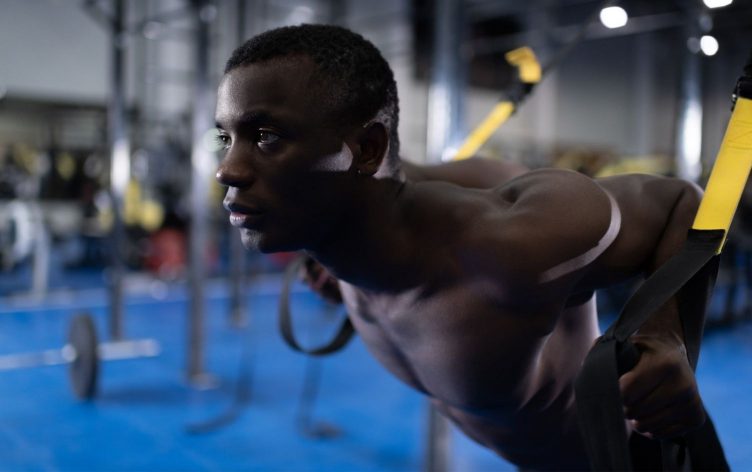
9 Moves for a Stronger Chest
When it comes to building a stronger chest, the bench press gets all the credit. Sure, you can move plenty of weight with a barbell, but it takes more than heavy weight to build the muscle you want.
In fact, the bench press is notorious for giving people achy shoulders. What’s more, proper bench-press technique actually takes stress off the chest, which means you need a few extra exercises to give your pecs the attention they deserve.
Ultimately, there are three different chest exercise categories that you can choose from. With the right combination of weight, sets and reps, you’ll build a stronger chest while sparing your shoulders unwanted aches and pains.
Here are nine exercises — three from each category — to give you a full arsenal of chest movements for your workout regimen:
Category 1: Presses
Presses work well for chest development because you can use heavy weights. This causes mechanical stress. Straining under heavy weight is one of several reliable ways to pack on muscle.
Here are our three favorite pressing exercises:
Barbell Bench Press
The barbell bench press has been the staple of almost everyone’s upper-body routine for decades, but it’s also wrecked plenty of shoulders in the process. But don’t blame the bench press — blame the lifter. Proper technique makes the bench press safe and effective, all while helping you lift more weight.
Incline Dumbbell Bench Press
Dumbbells allow for more natural movement of the shoulders, plus you can change the angle of your wrist as you lift and lower the weight. This helps you get a better squeeze throughout the set. In combination with a slight incline, this squeeze creates a greater range of motion and stretch of the working muscles, leading to more muscle growth.
Floor Press
If the above pressing variations give you shoulder troubles, the floor press is a worthy alternative. Lying on the floor removes the bottom half of the movement, which is the most stressful for the shoulders. And while you lose a bit of chest involvement, you can still press heavy weights and contribute to overall pec development. Floor presses can be done with a barbell or dumbbells, so give both variations a try.
Category 2: Push-Ups
It’s hard to beat good old-fashioned push-ups when you’re trying to build a stronger chest. Without the need for fancy equipment, push-ups can be done almost anywhere and adapted to any lifter’s strength level.
These three progressions and regressions run the gamut from the most basic to the highly advanced:
Incline Push-Ups
If you’re new to push-ups, don’t bow down. No, seriously: Don’t do push-ups on your knees. By kneeling on the floor, you take away the necessary core positioning to master the push-up. Instead, elevate your hands on a bench, bar, chair or even a wall. Propping up your hands makes the push-up easier, which will lead to faster progression.
Band-Resisted Push-Ups
Like many exercises, push-ups are hard at the bottom and easy at the top. One way to make push-ups more challenging, especially at the top when the chest is squeezed the hardest, is to add a resistance band around the top of your back and shoulders. This accentuates the lockout, making your chest and triceps work overtime.
Suspension Trainer Push-Ups
Push-ups on a suspension trainer (such as a TRX or Jungle Gym XT) might be the hardest exercise on this entire list. But they are also perhaps the ultimate chest exercise because of their ability to combine every single movement of the chest, including the all-important horizontal abduction (think a hugging motion). Spreading your hands apart as you lower down and pulling your hands together as you press up will give your chest a challenge unlike any other movement.
Category 3: Flyes
Presses and push-ups alone won’t give your chest all the love it needs. That’s because when you hold a straight bar or dumbbells, it’s impossible to get your hands to cross over your chest completely. This limits your ability to work through a full range of horizontal abduction, which, as previously mentioned, is an often-forgotten function of the chest muscles.
Flyes pick up where presses leave off and allow you to “hug” your way to a stronger chest. Here are our three favorite variations:
Dumbbell Flyes
Dumbbell flyes are fairly common but often performed incorrectly. Too many people use too heavy a weight or allow too big a stretch at the bottom of the movement. To protect your shoulders while still hitting your chest hard, stop when your elbows are slightly below your shoulders. Use lighter weights and higher reps to make up for the reduced range of motion.
Cable Flyes
Where dumbbell flyes miss the mark, cable flyes hit the bull’s-eye. Any effective exercise should load the muscle when it’s at peak contraction. In the case of dumbbell flyes, the exercise is easier at the top with your hands together, where the chest should be working hardest. Cable flyes fix this by creating constant tension through the entire movement. Again, make sure to keep your elbows even with your shoulders at the bottom and squeeze your pecs hard at the top.
Suspension Trainer Flyes
Much like its push-up cousin, suspension trainer flyes add an intense stability component that you won’t get with dumbbells or cables. However, you’ll lose the effectiveness of the exercise if you don’t brace your core properly, making this a movement best reserved for advanced lifters.
Sample Workout Plan
Chest exercises are best performed as part of an upper-body workout that also targets the upper back and shoulders to maintain muscular balance. Pick your favorite moves from the list above, and use this guide for a full-blown upper-body session:
Pressing variation: 4 sets x 5–8 reps
Rowing variation: 4 sets x 5–8 reps
Push-Up variation: 3 sets x 8–10 reps
Pull-Up or Pull-Down variation: 3 sets x 8–10 reps
Flye variation: 3 sets x 10–12 reps
Face-Pull variation: 3 sets x 10–12 reps
































